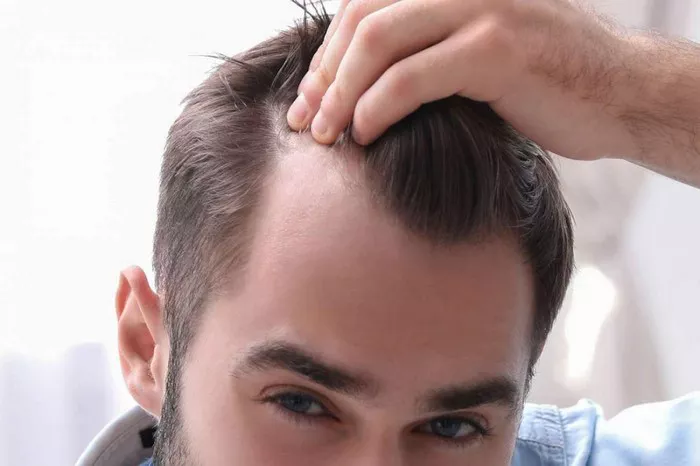One of the most common concerns among individuals considering hair transplant surgery is whether their donor area will grow back after the procedure. The donor area, typically located at the back and sides of the scalp, is the source of healthy hair follicles used for transplantation. These follicles are known to be more resistant to hair loss, making them ideal for relocating to balding or thinning areas.
The Biology Behind Hair Growth in the Donor Area
Hair follicles have unique characteristics based on their location. Follicles in the donor area possess a genetic resistance to the hormone DHT (dihydrotestosterone), which is primarily responsible for androgenetic alopecia, or male pattern baldness. This resistance means that transplanted hairs tend to continue growing normally even after being moved to new areas of the scalp.
When hair follicles are extracted from the donor area, whether by follicular unit extraction (FUE) or follicular unit transplantation (FUT), the surrounding hair follicles are usually left intact. Because of this, many patients wonder if the donor area itself will be able to regenerate the lost follicles and “grow back” hair after the procedure.
Does the Donor Area Regrow Hair After Extraction?
It’s important to clarify what “growing back” means in this context. Hair follicles are individual structures, and once a follicle is extracted, that particular follicle does not regenerate or grow back in the same spot. In other words, the donor area does not regenerate the exact follicles removed during surgery.
However, this does not mean the donor area becomes bald or visibly thin right away. Skilled surgeons ensure that extraction is done with precision, spacing out follicle removal to maintain overall density and natural appearance. This approach allows the donor area to heal well and appear full despite the removal of some follicles.
Factors Influencing Donor Area Regrowth Appearance
Several factors influence how the donor area looks post-surgery:
- Extraction technique: FUE tends to leave tiny dot-like scars, while FUT leaves a linear scar. Both can be managed carefully to minimize visible changes.
- Number of grafts taken: Overharvesting can lead to thinning, so surgeons recommend conservative graft extraction within safe limits.
- Healing capacity: Individual healing and hair growth cycles affect how well the donor area recovers its appearance.
With proper care and expert technique, most patients experience a donor area that looks natural and healthy without obvious signs of extraction.
Will Hair Transplant Surgery Affect Future Hair Loss in the Donor Area?
Another important consideration is whether the donor area will continue to lose hair naturally after surgery. Because the donor follicles come from genetically resistant areas, they typically remain stable. However, patients with ongoing hair loss might see thinning around the donor region over time due to aging or progression of hair loss conditions.
To manage this risk, doctors often recommend combining surgery with medical treatments like minoxidil or finasteride to preserve existing hair in both donor and recipient sites.
Donor Area Recovery Timeline and Expectations
The recovery process of the donor area varies depending on the surgical method used. In hair transplant surgery, the donor area generally heals within 7 to 14 days for FUE, with tiny scabs falling off and minimal discomfort. FUT recovery takes longer due to the linear incision, often requiring 2 to 3 weeks for full healing.
During recovery, mild redness, swelling, and numbness can occur but typically resolve within a few weeks. Hair shedding in the donor area is minimal compared to the recipient site, as the follicles around the extraction zones remain intact and continue growing normally.
How to Care for Your Donor Area After Surgery
Proper care is critical to ensure the best healing and cosmetic outcome of the donor area:
- Avoid scratching or picking at scabs.
- Follow your surgeon’s instructions on washing and shampooing.
- Protect the scalp from direct sun exposure during initial healing.
- Refrain from strenuous activities that increase scalp sweating or strain.
Following these guidelines will help maintain donor area health and appearance during recovery.
Addressing Common Myths About Donor Area Regrowth
There are several myths about donor area regrowth that cause confusion:
- Myth: The donor area grows back the exact hair follicles removed.
Fact: Hair follicles do not regenerate in the extraction site, but the area heals and looks natural when done properly. - Myth: Taking too many follicles causes permanent baldness in the donor zone.
Fact: Overharvesting can lead to visible thinning, but conservative extraction techniques minimize this risk. - Myth: Donor hair can be used repeatedly for multiple transplants.
Fact: Donor supply is finite, and multiple surgeries require careful planning.
Choosing the Right Surgeon to Protect Your Donor Area
The key to preserving your donor area lies in selecting an experienced and skilled surgeon who understands the delicate balance between harvesting enough follicles to achieve results and maintaining donor site integrity. Techniques like FUE and FUT each have advantages and challenges, and your surgeon should tailor the approach to your unique hair characteristics and goals.
Conclusion
In summary, the donor area will not “grow back” the exact follicles removed during a hair transplant, as hair follicles do not regenerate. However, with expert surgical technique and proper aftercare, the donor site typically heals well and retains a natural, full appearance without noticeable thinning. The resilient nature of donor follicles helps ensure long-term stability, but managing future hair loss with medical treatments may be necessary.
For those considering this transformative procedure, understanding the realities of donor area regrowth can set appropriate expectations and lead to better satisfaction with the results. To learn more about the entire process and what to expect, exploring information on hair transplant before and after results can provide valuable insight.
Related Topics:
- How to Restore Your Hairline: A Comprehensive Guide
- What’ the Difference Between FUT and FUE?
- How to Grow Back Your Hairline?


